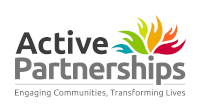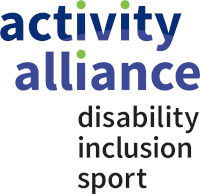Title
Physical activity and mental health
Research Area
Health; Tackling Inactivity
Author
Mind
Summary of Findings
This report is focussed on the Get Set to Go programme which aimed to engage 75,000 people with mental health problems in sports and physical activity. It did this through local delivery of group based sessions introducing participants to physical activity and digital delivery highlighting the benefits of physical activity on mental health.
Data was collected via a number of methods and sources for this report. A literature review was completed to support understanding of the relationship between sport and mental health recovery whilst data was collected in relation to local delivery in the form of surveys, focus groups, mood diaries and interviews. For digital delivery, surveys and interviews were used.
Researchers found that those completing the local delivery programme reported feeling an increase in social support. This is attributed to the peer to peer nature of the programme. Individuals reporting high levels of social support generally reported higher levels of mental wellbeing. Participants also reported that taking part in the programme led to increased confidence, improved mood, reduced overthinking, a greater feeling of calm, higher self esteem and reduced loneliness/isolation. Some participants noted that during the programme they experienced episodes of poor mental health to an extent that prevented them in fully engaging or maintaining their activity levels. Additional barriers noted were lack of motivation and worry about the potential for increased pain/exhaustion. Those who reported experiencing more barriers also recorded lower levels of wellbeing. Some participants began to experience anxiety over the amount of activity they were engaging in and felt they needed to keep increasing their levels. In a few cases, high intensity physical activity became a form of self harm. These issues were addressed within the programme through education on the risks of over exercising and by encouraging individuals to be self aware.
When reviewing the local delivery the report noted many people found attending the first session the most challenging as they did not know what to expect. Similarly when returning from a break therefore it was important for those leading the sessions to be supportive and encouraging. The report also found that an exit route is important as a number of participants engaged well with the sessions but began to rely on them and did not have the confidence to start activity outside the programme. More positively the focus on inclusivity, accessibility and clear communication in the programme design increased it's success. When reviewing the impact of the digital delivery element researchers found that although physical activity levels had not increase the attitudes and motivation towards activity had become more positive. Knowledge had increased and there was felt to be some benefit in the existing information being reinforced by a trusted source. Some users felt the information online was too much or not specific enough to their situation. Additionally when discussion activity with others online there was a risk of comparison leading to feelings of inadequacy and disengagement.
Overall there was an acknowledgment that many people felt they should take part in physical activity because of guilt or pressure rather than because they wanted to or enjoyed it. However there was some evidence that once people started engaging in activity they did start to enjoy it and their motivation changed. Finally breaking down barriers is key to engaging people especially information on how personal barriers can be overcome.
Implications
The learnings from this report can be applied more widely in terms of engaging people in physical activities and the potential barriers they face.
.png)













